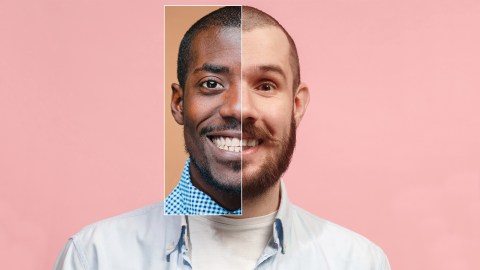Americans have become less biased — in regard to race, disability, and sexuality — since 2004

Image: Shutterstock
- The study examined the results of more than 4 million tests designed to measure implicit and explicit biases.
- The tests measured attitudes toward groups defined by age, disability, body weight, race, skin tone, and sexuality.
- All explicit biases decreased during the study’s timeframe, while several categories of implicit bias diminished.
In an era when identity is brought to the forefront of nearly every cultural conversation, a new study highlights a somewhat counterintuitive trend: Since 2004, Americans seem to have become less biased—both implicitly and explicitly—toward certain social groups.
The study, published on January 3 in the journal Psychological Science, examined the results of 4.4 million online tests that measured explicit and implicit biases toward groups defined by age, disability, body weight, race, skin tone, and sexuality. Taken by people living in the U.S. from 2004 to 2016, the results showed that explicit (self-reported) biases in all categories decreased during the study’s timeframe. However, not all biases dropped equally.
“The rates of explicit attitude change ranged from a rapid 49% decrease in explicit bias towards gay and lesbian individuals, to a relatively slower 15% decrease in explicit bias towards overweight individuals,” Tessa E. S. Charlesworth of Harvard University, the first author on the study, told the Association for Psychological Science.
But more surprising was the finding that Americans’ implicit (or automatic) biases also seemed to drop significantly.
“Implicit sexual orientation, race, and skin-tone attitudes have all decreased in prejudice over the past decade, with the rates of change ranging from a rapid 33% decrease in implicit bias towards gay and lesbian individuals to a relatively slower 15% decrease in implicit bias towards dark-skinned individuals,” Charlesworth said.
All groups of Americans generally reported less implicit bias toward groups defined by sexuality, while millennials showed the greatest decreases in implicit biases toward groups defined by race and skin tone. However, some biases don’t appear to be diminishing. Implicit attitudes toward groups based on age and disability remained stable over the study’s timeframe, while negative attitudes toward overweight people actually increased.
To measure implicit bias, the researchers used variations of the Implicit Association Test (IAT), a word-based test that asks respondents to quickly match certain groups to descriptors, and then measures how long it took for respondents to form those associations. For example, an IAT might ask a respondent to pair “male” or “female” with the attribute “logical.” The idea is that quicker associations represent stronger implicit biases.
Implicit biases can change
The results are promising because they show that our implicit biases can change significantly over the course of a decade, the researchers said.
“We provide the first report of long-term change in both implicit and explicit attitudes – measured from the same individual – towards multiple social groups,” Charlesworth said. “This research is important because it shows that, contrary to previous assumptions that implicit attitudes were stable features of the mind or society, implicit attitudes appear, in fact, to be capable of long-term durable change.”
Still, it’s worth noting that the study only included answers provided from 2004 to 2016, and some polling data shows that many Americans report feeling that racism or race relations have gotten worse in recent years. For instance:
- In February 2018, the Associated Press/NORC Center poll asked black Americans if race relations in the U.S. are better, worse or about the same as in February 2017. About 7 percent said better, 65 percent said worse, and 27 percent said about the same.
- A 2017 Pew Research Center survey showed that, compared to 2015, the share of Americans who said racism was a “big problem in our society” rose by 8 percent—an increased reported almost entirely by Democrats.
- An NBC poll from 2018 showed that 64 percent of Americans felt that racism remains a “major problem in our society.”





